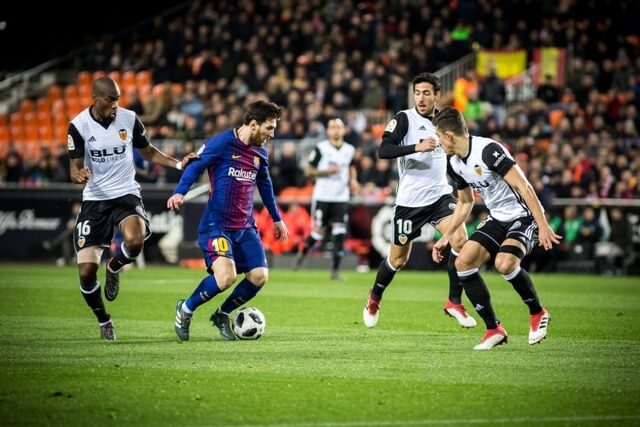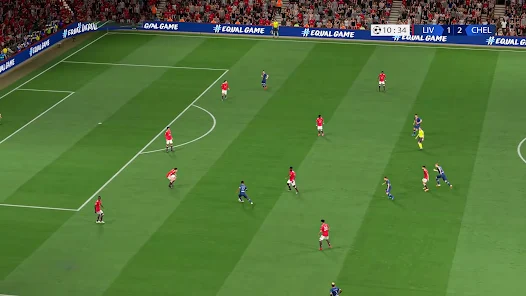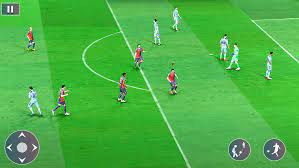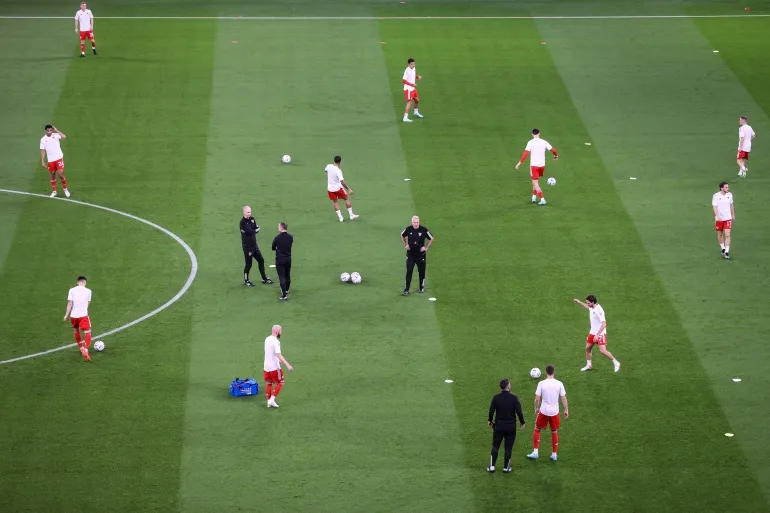
In the world of football, half-time scores are not just a string of simple numbers. They are like mysterious symbols that hide the code of the game, and contain a lot of information such as team strength, tactical arrangements, and player status. As a Vietnamese expert who has been paying attention to football games for a long time, I will combine the actual situation of the Vietnamese Football League with the experience of international football to take you to understand how to understand football half-time scores and uncover the mystery behind them.
1. Look at half-time scores from the perspective of team strength comparison
(I) A showdown between the strong and the weak
In the Vietnam V League, when Hanoi FC and Can Tho Football Club faced off, the strength gap between the two teams was significant. Hanoi FC has gathered many international players, and the team has strong overall strength, rich offensive means, and a solid defensive system. On the other hand, Can Tho Football Club, as a mid-to-lower-level team in the league, has a large gap with Hanoi FC in terms of personnel configuration and tactical literacy. Judging from the past match data, in the past 10 matches between the two sides, Hanoi FC led in the first half 8 times and won the whole game 9 times. Such half-time and full-time score results are due to the fact that Hanoi FC can control the rhythm of the game with the individual ability of the players and the teamwork after the start of the game, and constantly attack the opponent's goal. It is very likely to score in the first half and establish a leading advantage. Can Tho Football Club can only passively defend and it is difficult to pose a substantial threat to Hanoi FC's goal. Even if it keeps the score in the first half, it is easy for Hanoi FC to expand the score in the second half due to the decline in physical fitness and the gap in strength.
Looking at the international football world, when Manchester City played against the lower-level Premier League teams, it was also a contest with a huge gap in strength. Manchester City's strong ball control ability and efficient offensive efficiency make them very likely to take the lead in the first half. In recent seasons, Manchester City has scored an average of 1.5 goals in the first half of its matches against Premier League relegation teams. The probability of leading in the first half is about 70%, and the probability of winning at the full time is more than 85%. In such a game with clear strength, the half-time and full-time scores usually show a trend of the strong team leading or winning by a large margin.
(II) Competitions of similar strengths
When teams of similar strength such as Binh Duong FC and Nam Dinh FC meet, the direction of the half-time and full-time scores is full of uncertainty. Through the analysis of the data of the past 20 encounters between the two teams, the number of draws in the first half reached 12 times, accounting for 60%; the number of draws at the full time was 8 times, accounting for 40%. Teams of similar strength have little difference in tactical arrangements and player abilities. At the beginning of the game, both sides will be more cautious and adopt a strategy of steady defense and counterattack or tentative attack to avoid exposing tactical intentions and mistakes too early, which leads to a relatively high probability of a draw in the first half. As the game progresses in the second half, the coaches of both teams will adjust their tactics according to the situation on the field, and the players will gradually let go. Only then will there be more scoring opportunities in the game, and the results of the half-time score will be more diverse. In the top five European leagues, in the past 15 encounters between Liverpool and Manchester City, the probability of a draw in the first half is 47%. Both sides have the opportunity to take the lead in the whole game, and the final half-time score is difficult to predict.
II. The impact of tactical style on the half-time score
(I) Score characteristics of offensive tactical teams
Offensive teams represented by Buriram United in Thailand advocate high-pressure and fast-attack tactical styles. After the start of the game, Buriram United will quickly launch an oppressive attack on the opponent, trying to break the deadlock and take the lead in the first half. According to the statistics of the games in the past three seasons, Buriram United scored in 65% of the total games in the first half, and the probability of leading in the first half was 52%. Although this tactical style can increase the chance of taking the lead in the first half, it consumes a lot of players' physical energy. If the team fails to score in the first half, the offensive intensity of the team will decrease in the second half, and the opponent may seize the opportunity to counterattack, resulting in a change in the score in the second half. For example, when facing a team with solid defense, if Buriram United cannot score in the first half, the opponent may use the counterattack to score in the second half, and the final half-time score may be a draw in the first half and the opponent wins in the second half. In international football, Dortmund is also a typical offensive team. When they face a defensive counterattack team, if they cannot break through the opponent's defense in the first half, they will easily fall into a passive position in the second half, and the half-time score will be difficult to achieve the expected score.
(II) Score rules of defensive counterattack tactical teams
Defensive counterattack teams, such as Jeonbuk Hyundai in South Korea, usually adopt a strategy of shrinking the defense line in the first half when facing a stronger opponent, first stabilize the defense and look for counterattack opportunities. In the confrontation between Jeonbuk Hyundai and the top four teams in the K League, the probability of a draw or falling behind in the first half reached 70%. Jeonbuk Hyundai has excellent defensive players and an efficient counterattack lineup. When the opponent's offense is tired and makes mistakes in the second half, they can seize the counterattack opportunity to score. Take Jeonbuk Hyundai's game in the AFC Champions League as an example. When facing some strong offensive opponents, Jeonbuk Hyundai is often on the defensive in the first half, and the score may be 0-1 or 0-0 behind or tied, but in the second half, they rely on counterattack tactics to finally reverse the score. The half-time score shows a situation of disadvantage in the first half and victory in the second half. In European football, Italy's Juventus is also a master of defensive counterattacks. In the Champions League, Juventus often resists the opponent's offense in the first half through solid defense, and changes the score in the second half by counterattack or set-piece opportunities. This tactical style makes Juventus' half-time score full of drama.
III. Home and away factors and half-time scores
(I) Score performance under home advantage
In the Vietnam League, home advantage has a significant impact on the team's half-time score. Ho Chi Minh City FC has a 75% winning rate at home, and a 60% chance of leading in the first half. The enthusiastic cheering of home fans can greatly boost the morale of the players, and the team's familiarity with the home field also helps to better play tactics. For example, the grass at Ho Chi Minh City FC's home field is softer, and the team's players have long adapted to this field condition, and can better control the ball and make short passes, while away teams often need a certain amount of time to adapt to the field, which creates more offensive opportunities for the home team. In international competitions, Real Madrid's home winning rate at the Bernabeu Stadium has remained above 80% all year round, and the number of games in which they took the lead in the first half accounts for more than 65%. The strong home advantage makes it easier for Real Madrid to score goals and establish a leading advantage in the first half when playing at home, and the probability of winning the whole game is also greatly increased. The half-time and full-time scores often show that Real Madrid is leading or winning by a large margin.
(II) Dilemma of scores in away games
Teams playing away games face many unfavorable factors, such as fatigue from long-distance travel, interference from away fans, and lack of adaptability to away field conditions. These factors will affect the team's performance in the game and thus affect the half-time and full-time scores. When Vietnamese teams play away games, the probability of falling behind in the first half is generally 20% - 30% higher than at home. Taking Da Nang FC as an example, its away win rate is only 30%, and the probability of leading in the first half is less than 25%. In European football, when some Premier League teams challenge other league teams away from home, due to factors such as game time and field conditions, the team's state will be subject to certain fluctuations. It is not uncommon for poor performance in the first half to lead to full-time losses. Away teams are often in a passive situation in the game. It is difficult to score goals or even fall behind in the first half. It is also difficult to reverse the score in the second half. The half-time and full-time scores are usually unfavorable to away teams.
IV. Player status and half-time score
(I) The key role of core player status
The status of core players plays a decisive role in the half-time score of the game. In the Vietnamese national team, Nguyen Cong Phong is the offensive core of the team. When he is in hot form, the offensive efficiency of the Vietnamese team will be greatly improved. In the last 10 games in which Nguyen Cong Phong was in excellent form, the probability of Vietnam scoring in the first half was 70%, and the probability of winning the whole game was 65%. With his outstanding personal ability, Nguyen Cong Phong was able to create more offensive opportunities in the game and help the team score goals. When Nguyen Cong Phong was absent due to injury or in a low state, the Vietnamese team's offense was obviously weak, and the probability of scoring in the first half dropped sharply to 30%, and the probability of winning the whole game was only 25%. In European football, Mbappe is crucial to Paris Saint-Germain. When Mbappe is fast and explosive, the probability of Paris Saint-Germain taking the lead in the first half is about 55%, and the probability of winning the whole game is as high as 75%. On the contrary, if Mbappe is successfully restricted by the opponent, Paris Saint-Germain's offensive power will be greatly reduced, and the half-time score will be difficult to reach the expected score.
(II) The impact of the overall state of the team
The overall state of the team will also directly affect the half-time score. A team that has won consecutive games recently, the players are in high spirits and have tacit cooperation. In the game, both offense and defense can play at a high level. Take Thanh Hoa FC in the Vietnam League as an example. When the team is in a five-game winning streak, the probability of leading in the first half is 58%, and the probability of winning the whole game is 70%. When the team suffers a losing streak, the players' confidence is frustrated, the tactics are not implemented in place, and the number of mistakes in the game increases. At this time, the probability of falling behind in the first half will increase significantly, and the hope of winning the whole game is also very slim. In the top five European leagues, when a team suffers from a wave of injuries and several key players are absent, the team's overall strength declines, and both offense and defense are affected, and the halftime score is often unfavorable to the team.






